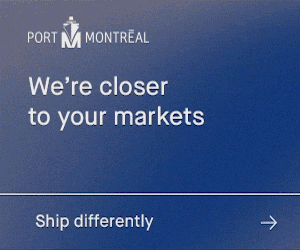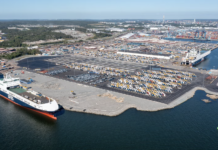
Shachar Tal, co-founder of Loginno, an innovative company that provides GPS container tracking devices, has shared his views with Container News on the technology evolution of the shipping sector.
Shachar Tal explains that Contopia (a term used to describe a world where every shipping container is real-time IoT connected), is a one-way road for the industry and comments on how this will be possible with Loginno.
- Back in 2019, you mentioned to Container News that the market of shipping companies is starting to be ready for digitalisation. What has changed since then? Are shipping companies more open to Contopia?
Ten years ago, if you asked a shipping company whether they will use smart containers, a majority of them didn’t even believe that the technology will be widespread. Three years ago – they were all gearing up for smart containers becoming a standard, starting from forming the Digital Container Shipping Association (DCSA) and retrofitting reefers with Internet of Things (IoT) devices.
Hapag-Lloyd’s announcement, for equipping its entire fleet with IoT sensors, is exactly on the same vector. Furthermore, their announcement created a sense of urgency which says: your competitors are getting ready for smart containers and if you don’t prepare today – you’ll find yourself in an inferior position.
This is exactly why we issued the Smart Container Evaluation Kit – for it to be a way for a shipping company to start experimenting with Smart Containers without making a very big investment.
- What is the most common data that your customers draw and use?
As much as I’d like to advocate cutting-edge technologies and unique sensors, at this current state, the feature that provides the biggest leap from the current conduct to a smarter way of operation is location data.
The switch from Electronic Data Interchange (EDI) to real-time, or close to real-time location is a very significant one and affects almost any operational aspect of container movements: from balancing to Maintenance & Repair (M&R), to triangulation.
Having said that, all the other “bells and whistles”: intrusion detection, vibration analysis, and even specialized tech like SOLAS Verified Gross Mass (VGM) weighing – that is exactly what gives power to the data: the ability to convert as much of the operation to the digital world, and use that digital twin to not only dramatically optimize a shipping company’s operations even more, but also to support and benefit from data-driven excellence applied for the rest of the chain.
For example, triangulation can be optimized by real-time location alone, but add unstuffing detection and the optimization becomes three times more effective. An event investigated by insurance may benefit from location data alone, but combined with smart environmental analysis means the difference between successful and unsuccessful recuperation of the loss from the liable party.
- Do you think that containers with IoT is a one-way road for the future? If so, in how many years do you predict this will be the norm in the market?
No doubt about that. I was ready to make that bet 13 years ago, and even more so now. The values from smart containers are so apparent and so impactful that market adoption is just a matter of time. Looking at it from the other side means that the loss from not having a smart container is considerable. As a shipping company – I would have viewed it as a daily loss each day while my containers are not smart. This is reason enough for the innovators and leaders of the industry to act. The rest will have to follow because otherwise, they will be out of the game with a sub-par product.
I believe that we will reach a critical mass in about five years or less, and a true digital ecosystem in the next decade.
- Are you planning to introduce products/solutions for other types of containers, except dry ones?
While our standard online offer is for dry containers, our projects encompass all types of assets. The technological core is the same for dry vans, iso tanks, flats, open tops, or any type of asset. With some of the reefers, we also have the luxury of either connecting our own brain, or just a modem by the manufacturer.
- Do your customers have access to future product upgrades? If so, in what way?
The nice thing about having a powerhouse as the container’s brain is the constant software upgrades. Think of it like installing apps on a cell phone: now and again a new functionality comes up. The containers we convert today to smart containers will have 10 years of upgrades and improvements ahead, and all of the technologies that we are working on today take into account the very specific mix of technologies that we already have in all of our devices. The whole idea of creating the AGAM is to make something that lasts a container “generation” and that is exactly what we do.








